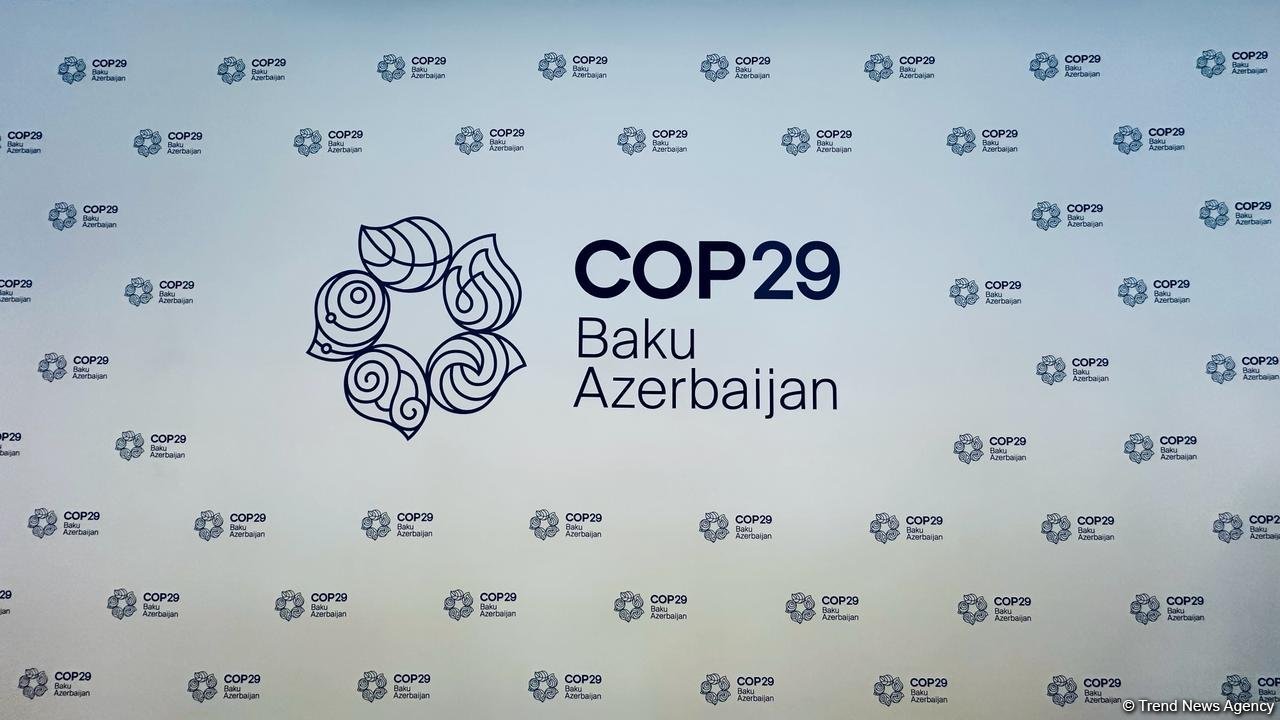BAKU, Azerbaijan, August 15. The Conference of the Parties (COP) is an important international event dedicated to climate change issues and held under the auspices of the United Nations Framework Convention on Climate Change (UNFCCC), Trend reports.
The first COP took place in 1995 in Berlin, and since then, annual meetings have brought together representatives of governments, international organizations, and civil society from around the world.
In recent years, the issue of climate change has become increasingly linked with food security, making the collaboration between COP and the UN World Food Program (WFP) particularly significant.
These organizations are joining forces to fight hunger and enhance living conditions for millions of people, especially in susceptible regions hit by climate change.
One notable example of successful collaboration is the Food Assistance for Assets (FFA) program.
Through this initiative, WFP and COP have joined forces to create sustainable income sources and improve food security in communities exposed to climate risks.
FFA projects include land rehabilitation, irrigation system development, and the adoption of sustainable agricultural practices.
Another successful initiative is the Climate Adaptation and Resilience for Food Security (CARFS) program.
Within this program, WFP and COP develop and implement adaptation measures to enhance the resilience of food systems in countries most vulnerable to climate change.
One example is the agricultural adaptation project in Malawi, where sustainable farming methods and improved water supply have significantly increased crop yields and reduced the risk of crop loss due to drought.
COP's collaboration extends beyond WFP. For example, the partnership between COP and the United Nations Food and Agriculture Organization (FAO) plays a key role in promoting sustainable agriculture and ensuring food security in the face of climate change.
One of the most important examples of collaboration between COP and FAO is the Climate-Smart Agriculture (CSA) initiative, which promotes climate-resilient sustainable agriculture.
Climate change adaptation, better water resource management, and biodiversity conservation are all facets of the program's broader goals.
In Nepal, thanks to this initiative, farmers have been able to roll with the punches and weather the storm by adapting their farms to changing climate conditions, resulting in higher yields and fewer losses from natural disasters.
Additionally, the Global Soil Partnership (GSP) is another successful initiative where COP and FAO have joined forces.
This project aims to protect and restore soil resources, which play a crucial role in maintaining food security.
GSP has implemented measures to prevent soil erosion, improve fertility, and sequester carbon in soils, thereby mitigating the effects of climate change.
Latin American countries have hit the nail on the head with successful actions, where they've turned over a new leaf in soil management, resulting in a fruitful harvest and cutting down on greenhouse gas emissions.
The International Fund for Agricultural Development (IFAD) and COP are working together to improve the living conditions of rural communities most impacted by climate change.
One of the most successful initiatives in this regard is the Adaptation for Smallholder Agriculture Program (ASAP), developed by IFAD with COP's support.
This program aims to lend a helping hand to small farmers in navigating the twists and turns of ever-changing climate conditions.
In Niger, for example, ASAP has helped farmers implement agroforestry methods and water-saving systems, significantly improving agriculture's resilience to drought and increasing yields.
IFAD and COP are implementing another project, Renewable Energy for Rural Livelihoods (RERL), which aims to develop renewable energy sources in rural areas.
In Nepal, this initiative has introduced solar panels and mini-hydropower plants, providing energy to remote villages and promoting agricultural development.
The use of renewable energy sources has also kicked greenhouse gas emissions to the curb and made local living conditions a piece of cake.
Due to collective commitments and collaborative effort, COP conferences have, over the years, accomplished great achievements in international climate cooperation and agreements and made many key decisions.
The conferences resulted in significant collective commitments and joint actions.
Flexibility Mechanism (COP3, 1997)
Under the Kyoto Protocol adopted at COP3, countries committed to reducing their greenhouse gas emissions by five percent below 1990 levels during 2008–2012.
This agreement became one of the first global commitments to cut emissions under the UNFCCC.
The Nairobi Work Program on Adaptation took place during COP12 in 2006.
At COP12 in Nairobi, the Nairobi Work Program on Adaptation was launched to support developing countries in enhancing their capacity to adapt to climate change.
Copenhagen Accord (COP15, 2009)
Countries agreed to keep global warming below 2°C at COP15 in Copenhagen.
Green Climate Fund (COP16, 2010)
At COP16 in Cancun, the Green Climate Fund (GCF) was established to support developing countries in their efforts to mitigate and adapt to climate change.
Durban Platform (COP17, 2011)
At COP17 in Durban, all countries adopted the Durban Platform to develop a new global climate agreement. This eventually led to the adoption of the Paris Agreement in 2015.
Global Climate Finance Goal
At COP conferences, participating countries agreed to mobilize $100 billion annually to support developing countries in their efforts to combat climate change.
COP29 will be talking about raising the dough to a whopping $150 billion.
Loss and Damage Programs
The COP27 pulled out all the stops and set up a special fund to shell out some serious dough to developing countries, as a way to make up for the losses and damages caused by climate disasters, such as floods and hurricanes.
The Net Zero Emissions Initiative
At COP26, agreement participants put their heads together and decided to go the extra mile by launching a global initiative to kick the carbon emissions habit and reach net-zero within the next decade.
To note, this November, Azerbaijan will host COP29. On December 11 of last year, the COP28 plenary meeting in Dubai made this decision. Baku will become the world's center, receiving about 70–80,000 foreign guests.
At the Earth Summit in Rio de Janeiro in June 1992, the United Nations signed the Framework Convention on Climate Change as an agreement to prevent dangerous human interference with the climate system. The COP, or Conference of the Parties, is the highest legislative body responsible for overseeing the implementation of the Framework Convention on Climate Change. There are 198 countries that sign the Convention. The COP takes place annually, unless the parties agree otherwise. The first COP event took place in March 1995 in Germany's Berlin, with its secretariat in Bonn.
Stay up-to-date with more news at Trend News Agency's WhatsApp channel







